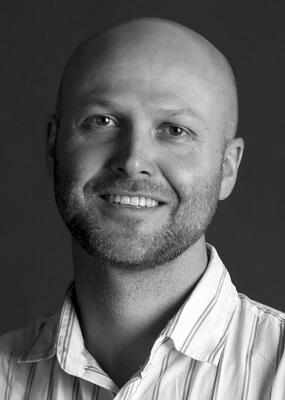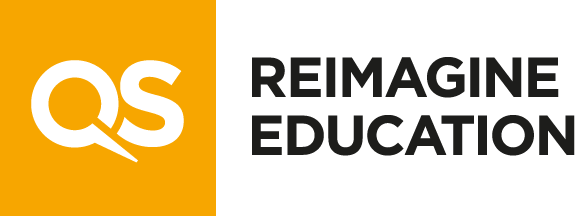THE TOWSON UNIVERSITY INCUBATOR
MEETING STUDENTS WHERE THEY ARE
Professional programs within mainstream higher education are traditionally conservative and risk-averse, making it hard to introduce any significant changes into the curriculum. This is not necessarily a bad thing, since educators and program heads are subject to audit by professional regulatory bodies, and institutions are reluctant to expose their professional programs to negative public perception should something go wrong.
All of this creates a climate in which curricular innovation is often difficult to implement. This is right. Mainstream health professional education is generally conservative and slow to change because it must not only contend with concerns about pedagogy, but also ensure that patients are not negatively affected by curricular change. And yet innovation is an essential aspect of professional development, especially in a digital and networked society where our understanding of “teaching” and “learning” must adapt in order to ensure that we graduate students who are capable of thriving in the complex and dynamic systems of the 21st century.
In 2013 I asked what a course might look like that aimed to address some of these concerns, and teamed up with Physiopedia to run the first completely open online course in physiotherapy education. We wanted to develop a course that would see physiotherapy students in a mainstream university curriculum given opportunities to develop a set of competencies associated with learning in digital and online environments. We wanted students to be confronted with the challenges presented by the demand to learn collaboratively in public, as well as expose them to a wide range of perspectives regarding professional ethics and the influence of personal morality on clinical decision-making.
We proposed that the best method of facilitating these outcomes would be to have them do their writing (and therefore their thinking) in public using blogging software: a purpose for which we chose WordPress. Another useful benefit was that they would set up their own blogging environment, which be customizable, and, thus, a reflection of a truly personal learning portfolio. Each student would therefore also develop digital literacy skills , and the capacity to create a personally meaningful online learning space. In addition, since we knew students would be discussing potentially sensitive topics in public, we had to prepare them to ensure that they would respect patient and clinician privacy, for example. Rather than forbidding them to interact online, we wanted to see if we could instead better prepare them for public practice (they are, after all, accountable to the public).
This pilot project provided enormous value in terms of developing a set of implementation guidelines for setting up and running open online professional courses (http://www.mrowe.co.za/blog/2013/09/pht402-final-thoughts-and-moving-forward/), and led to a series of conference presentations and academic publications. The fact that the course was open (free to participate in, freely licensed content, and public) allowed us to invite participants from all over the world. In the first pilot implementation we had 38 qualified physiotherapists from around the world interacting with third year physiotherapy students, as they all moved through the course together. We had students giving each other feedback on their writing, but we also had clinical experts giving them feedback, which had a profound influence on the way that the students’ thought about their own ethical practice. It’s all very well for your lecturer to tell you something but when that that same feedback comes from a physiotherapist in another country, it changes the interaction and perceived value to the student. They learn not only that perhaps their lecturers may know something after all, but also how to interact with future colleagues in professional and ethical contexts.

Michael Rowe is an Associate Professor in the Department of Physiotherapy at the University of the Western Cape in Cape Town, South Africa. He conducts research into the use of emerging technologies and their mediating effects on the relationships between teachers and students in the context of health professions education.
The project is still running and is currently in its fourth year. After the first implementation we shifted the emphasis solely to undergraduate students from different physiotherapy departments around the world. In 2017 we had student participants from Bangladesh, Minas Gerais (Brazil), Cape Town (South Africa), Bern (Switzerland), all working together on the same course. Students are provided with a variety of readings on different topics related to professional ethics, then they write blog posts using those topics to reflect on their own clinical experiences. Students from other countries then read and provide feedback on each other’s’ posts.
The end result is that students use concepts from the readings to inform reflections on their own clinical practice, which is then refined by feedback from students in another country. Students therefore use the online learning environment to blend the theory discussed in the classroom with their personal clinical experiences, along with feedback from multiple peers in different sociocultural contexts. This combination of using theory to better understand their personally-meaningful clinical encounters, and the use of peer feedback to guide reflection in a public space that is mediated with technology, presents what we believe is a unique learning experience for physiotherapy students.
By reading students’ personal and group reflections that they share online, where they describe how they think about difficult and sensitive topics that emerge in their clinical practice, I am able to bring those same topics back into the classroom for further discussion. So, for example, when I see that some students are struggling with the principle of patient autonomy, I am able to bring up the conversation in the classroom and either introduce important foundational concepts if they are new, or review them if we’ve covered them before. In practice, I adjust the curriculum lectures so that I cover whatever content seems most applicable to the most students at the time when it seems most appropriate to help them in their clinical practice.
In this way, we see a real blend of learning where we cover basic foundational concepts in the classroom, then see students reflecting online how those concepts inform their thinking and behavior on clinical placement, and then bring the conversation back into the classroom to review and inform future practice. It is therefore possible to see students’ learning moving between the classroom, clinical institutions and the online environment, and thus to enable the facilitator to provide conceptual input as and when it is necessary.
Another benefit of using WordPress to create the learning environment is that students manage their own posts with the understanding that will always have full control over their data. When they complete the course they could leave their contributions in situ (with or without their names), copy them out and import them elsewhere, or delete them entirely. This approach allows students to take their learning resources and artifacts from the course and as enduring evidence of their learning. It also helps them to develop a deeper understanding of the differences and intersections between personal, professional and online identity, and gives them skills to manage those different aspects of themselves. While the fact that we use an open-source platform means that we must necessarily operate the course outside of the institutional learning management system, we think that this gives us a degree of flexibility and responsiveness that we would be unable to replicate within the relatively narrow constraints of our mainstream LMS.
There are other reasons for choosing open courses, one of which is the fact that student cohorts are limited to learning interactions within those cohorts. In other words, traditional higher education institutions create configurations that make it hard for students to form learning relationships with peers outside of their group. For example, in the institutional LMS, students in my third year physiotherapy class cannot interact with students in the fourth year. They also cannot interact with students from other institutions, or with qualified professionals who have graduated, which limits their perspectives on the social and discursive norms of the profession. An open course allows students to not only incorporate resources from other environments e.g. Twitter, Facebook, YouTube, etc. but also to interact with peers and colleagues from anywhere in the world. In addition, when students move from one year to another their work in the previous year is deleted (or at best, archived). When they graduate they are not given the option to export their work, so we’re left with the strange situation where we tell students how important lifelong learning is but then delete four years’ worth of learning artifacts and resources without allowing them to take it with them. Considering that educational practice is a series of signals we send to students that highlight what we actually value – as opposed to what we say we value – we would do well to think carefully about the signals we send.
This project presents a model for extending professional engagement and learning beyond the boundaries of a mainstream higher education institution and also provides some guidelines for curriculum innovation within the context of a traditionally conservative professional program . Our intention is to extend the reach of this work, both internally (that is, to other courses within the program), and externally (to other institutions). This expansion is a long-term project; we intend to spend this year and next ensuring that we have a solid base from which to expand. This will involve consolidating our knowledge about the project’s successes and failures, migrating to the full, self-hosted version of WordPress, and developing our new technical platform.

